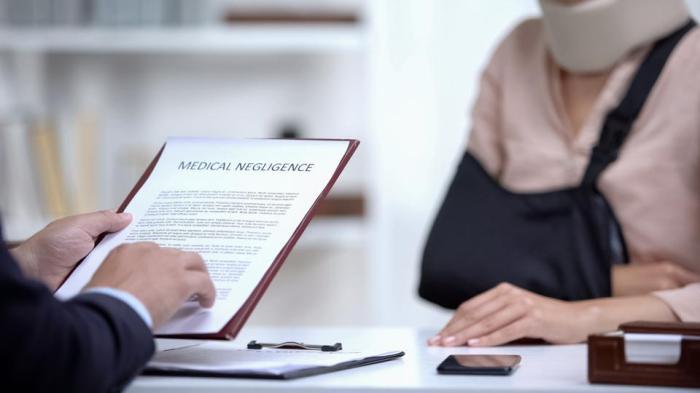Examples of negligence in phlebotomy illuminate the critical need for meticulous practices and adherence to safety protocols in blood draw procedures. This discussion delves into common errors, improper techniques, and the potential consequences of negligence in phlebotomy, emphasizing the paramount importance of patient safety and accurate diagnosis.
Negligence in phlebotomy can manifest in various forms, including inadequate patient preparation, improper venipuncture technique, misidentification of blood samples, and failure to follow safety protocols. Each of these aspects warrants careful examination to ensure the highest standards of care and minimize risks to patients.
Common Errors in Phlebotomy Practice
Phlebotomy, the process of drawing blood from a vein, is a common procedure in healthcare. While generally safe, errors can occur, leading to adverse outcomes for patients and healthcare providers. Understanding and addressing these errors is crucial to ensure patient safety and quality healthcare delivery.
One of the most frequent mistakes in phlebotomy is improper patient identification. This can lead to misdiagnosis, incorrect treatment, and potential harm to the patient. Another common error is incorrect site selection, which can result in pain, bruising, or infection.
Additionally, improper technique during blood collection, such as using the wrong needle size or applying excessive pressure, can cause discomfort, bruising, or hemolysis.
Consequences of Errors
- Patient discomfort and pain
- Bruising and hematoma formation
- Infection at the puncture site
- Incorrect laboratory results
- Delayed or incorrect diagnosis
- Inadequate treatment
- Legal liability for healthcare providers
Examples of Negligence
In one case, a phlebotomist failed to properly identify a patient, resulting in the patient receiving the wrong blood type during a transfusion. This error led to a severe allergic reaction and hospitalization. In another instance, a phlebotomist used the wrong needle size, causing excessive bruising and pain for the patient.
Inadequate Patient Preparation

Proper patient preparation is crucial for successful and safe blood draws. It involves providing clear instructions, obtaining informed consent, and ensuring patient understanding to minimize risks and discomfort.
Informed Consent
Before the procedure, patients must provide informed consent, indicating their understanding of the purpose, potential risks, and benefits of the blood draw. This includes explaining the needle size, the amount of blood to be drawn, and any potential discomfort or pain.
Patient Understanding
Ensuring patient understanding is essential. The phlebotomist should use clear and simple language, avoiding technical jargon. Patients should be able to ask questions and express any concerns or preferences. This helps reduce anxiety and increases patient cooperation during the procedure.
Potential Risks, Examples of negligence in phlebotomy
Inadequate patient preparation can lead to several risks, including:
- Fainting: Patients who are not adequately prepared may experience lightheadedness or fainting due to anxiety or improper positioning.
- Infection: Failure to properly clean the puncture site or use sterile equipment can increase the risk of infection.
- Hematoma: Applying excessive pressure or failing to apply pressure after the draw can lead to hematoma formation.
- Pain and discomfort: Inadequate patient preparation can result in increased pain or discomfort during the procedure.
Improper Venipuncture Technique: Examples Of Negligence In Phlebotomy

Proper venipuncture technique is crucial for obtaining accurate blood samples and minimizing patient discomfort. It involves a series of steps that must be followed meticulously.
The choice of needle and syringe depends on the volume of blood required, the patient’s vein size, and the skill of the phlebotomist. Common needle sizes range from 21 to 25 gauge, with shorter needles (1/2 to 1 inch) preferred for superficial veins.
Potential Complications
Improper venipuncture can lead to several complications, including:
- Hematomas:Bruising due to blood leakage into surrounding tissues.
- Nerve damage:Injury to nerves near the puncture site, causing numbness or pain.
- Infection:Failure to maintain aseptic technique can lead to bacterial contamination of the puncture site.
Misidentification of Blood Samples

Accurate patient identification is crucial in phlebotomy to ensure that blood samples are correctly attributed to the intended patients. Misidentification can lead to severe consequences, including incorrect test results and inappropriate treatment decisions.
Preventing Misidentification
To prevent misidentification, several procedures should be followed:
- Double-checking patient information:The phlebotomist should verify the patient’s identity using multiple sources, such as their name, date of birth, and medical record number.
- Using barcodes:Barcodes can be used to scan patient identification information, reducing the risk of manual errors.
- Implementing electronic health records (EHRs):EHRs can streamline the patient identification process and reduce the potential for misidentification.
Failure to Follow Safety Protocols

Adhering to safety protocols in phlebotomy is paramount to ensure the well-being of both healthcare professionals and patients. Failure to follow these protocols can result in severe consequences, highlighting the significance of their strict observance.
One of the most crucial aspects of safety protocols is the proper use of personal protective equipment (PPE), such as gloves and sharps containers. Gloves serve as a barrier against bloodborne pathogens, preventing exposure to infectious agents. Sharps containers, on the other hand, are specifically designed to dispose of needles and other sharp objects safely, minimizing the risk of needle-stick injuries.
Proper Use of Gloves
- Gloves should be worn whenever there is a potential for contact with blood or other bodily fluids.
- Gloves should be changed frequently, especially after handling contaminated materials.
- Gloves should be removed carefully to avoid tearing or puncturing.
Proper Use of Sharps Containers
- Sharps containers should be puncture-resistant and leak-proof.
- Sharps containers should be placed in a convenient location for easy access.
- Sharps containers should be disposed of properly when they are full.
FAQs
What are the most common errors in phlebotomy practice?
Common errors in phlebotomy include improper patient preparation, incorrect venipuncture technique, misidentification of blood samples, and failure to follow safety protocols.
What are the potential consequences of negligence in phlebotomy?
Negligence in phlebotomy can lead to adverse outcomes for patients, such as fainting, infection, hematomas, nerve damage, incorrect test results, and delayed or incorrect treatment.
What are the proper procedures for preparing patients for blood draws?
Proper procedures for preparing patients for blood draws include obtaining informed consent, ensuring patient understanding, and providing clear instructions on fasting and hydration.